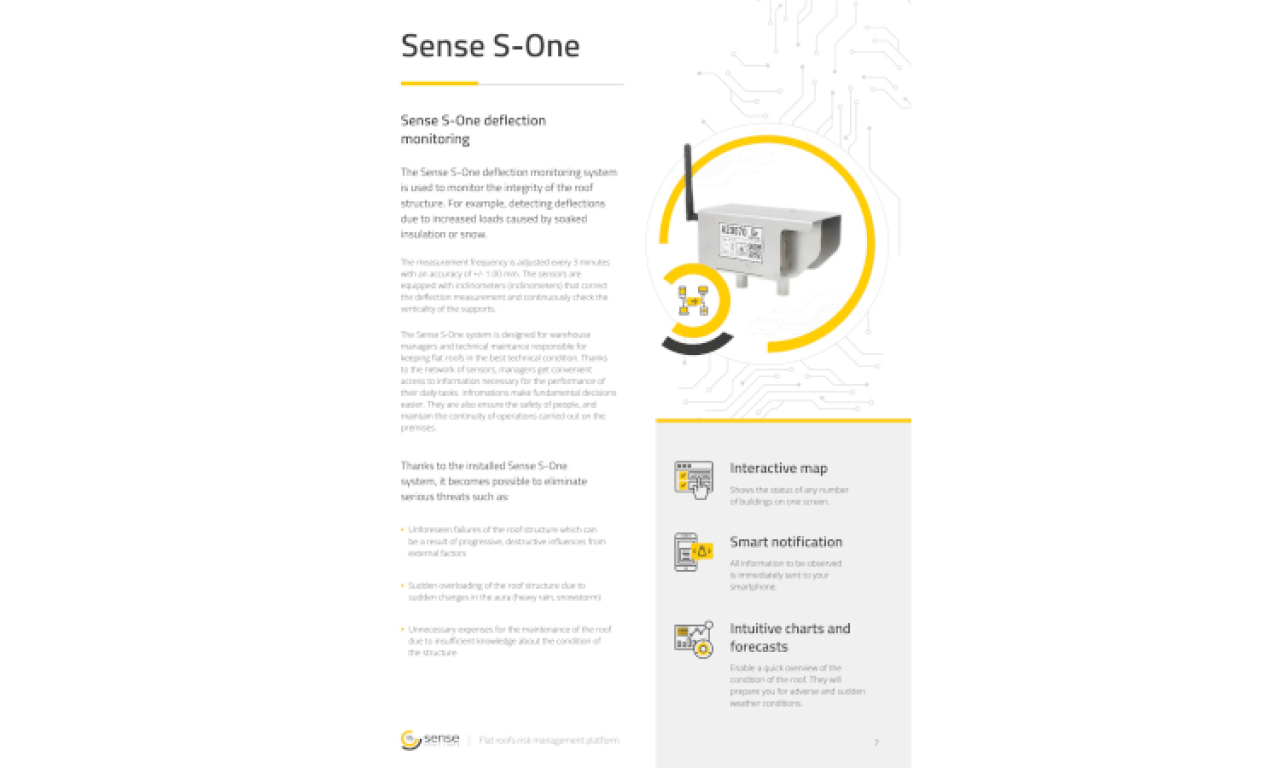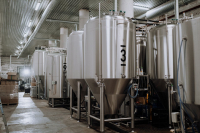How much snow cover is actually dangerous? When should steps be taken to ensure building safety? When is it necessary to remove snow?
KEY PARAMETERS OF THE ROOF STRUCTURE
Let's assume that we measure the snow cover on the roof in real time. This allows us to accurately track the current operational status of the structure. Depending on the method of measurement, we can give it in units of weight, deflection or strain of the structure. For simplicity, let's enter a value expressed in percentage, where 100% means achieving the standard parameter SGU, SGN or the load specified by the designer. In order for the roof structure to meet the assumed level of safety, it must not exceed the mentioned 100 percent of the selected parameter.
The key question now is: how far in advance should snow removal begin so as not to exceed this value and lower the safety level of the building? This question requires analysis of several factors. We have established that our measurements are up-to-date and we know exactly how much snow arrives every hour (thanks to the monitoring system).
WHEN SHOULD SNOW BE REMOVED FROM THE ROOF – WHAT IS THE BEST TIME?
Many instructions for snow removal from the roof say to start removing at around 70-80% of the assumed maximum load of our structure. However, before we start this activity, as building managers, we should check two more factors: (a) the time for mobilisation of the snow removal team (b) the forecast amount of precipitation.
The response time of the snow clearing company is usually written down in the contract. However, these firms are very busy during heavy rainfall. It is therefore better to make sure that the team does not receive another, more lucrative order for snow clearance beforehand. Even knowing that they will pay contractual penalties for breaking the contract with us. Remember to check in the contract whether the response time defined there is the same as starting snow removal. Unfortunately, it is common practice to send one person per site and not to mobilise the entire crew necessary for clearing snow from an area of a dozen or several thousand square meters.
Let’s say we have checked this parameter, and we know that the contractor declares to send the appropriate number of people within 8 hours of the notification. Next, we check the dynamics of snow cover growth. For example, you can use the website www.meteo.pl, which gives values in units of kilograms per square meter per hour.
SAFETY CRITICAL DECISION
Now begins the absolutely crucial moment for the entire process of removing snow from the roof. Clearing snow from a 10,000 m2 roof costs approximately PLN 50-60,000. Who would not want to save such an amount? That’s right. On the other hand, the responsibility for the safety of the building and the consequences of not ensuring safety are much greater. And the costs in case of any accident are, to say the least, enormous.
Someone has to make a decision: do we save and risk, or do we spend but sleep well? A responsible building manager knows that there are no compromises when it comes to safety.
The decision must be based on facts and a precise, reliable risk assessment.
To sum up, in order to make the right choice and answer the question: when should snow be removed from the roof, it is necessary to know the current condition of the roof structure, projected load growth and time for mobilisation of the snow removal crew. It is also necessary to remember that snow clearance may last from several to over a dozen days, and during this time the weather may change dramatically.
HOW SENSE MONITORING TAKES CARE OF THE ROOF?
We individually determine with our customers the alarm level to start snow removal, choose the most optimal option to ensure safety and at the same time save on unnecessary snow removal. We invite you to learn more about our Sense S-One system, which monitors the deflection of the flat roof from snow.
Feel free to email This email address is being protected from spambots. You need JavaScript enabled to view it. or contact me directly at this post.
Read more at Sense Smart Roofs








